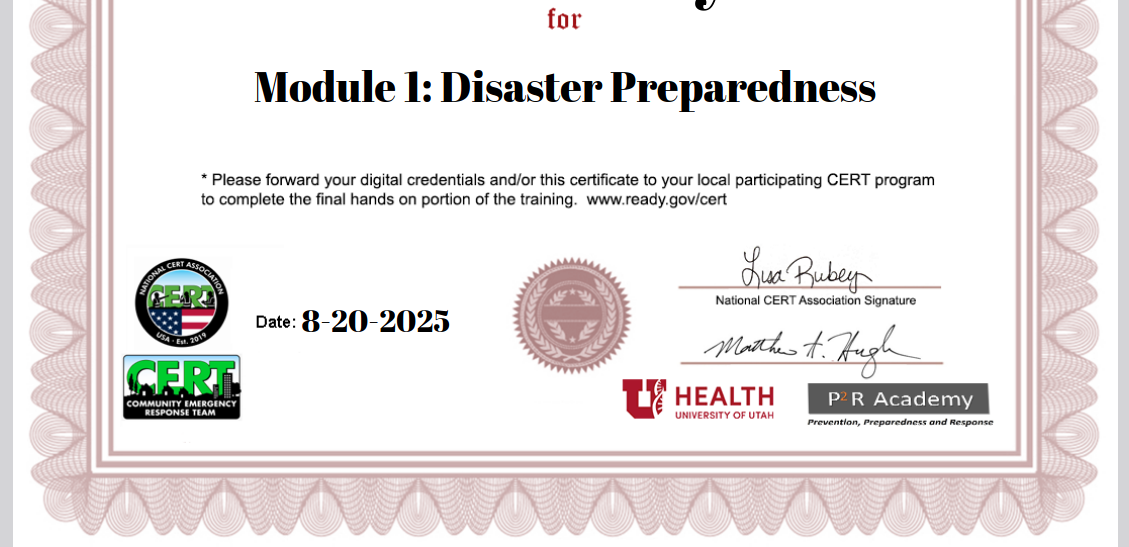
Community Emergency Response Teams are locally organized volunteer organizations that follow a formalized training curriculum in order to equip volunteers to operate in a trained, coordinated fashion when responding to disasters. Since we’re in a pretty remote place, if there’s a natural disaster it’s likely that we’ll all be on our own for hours to days until government resources can arrive from a nearby population center. I wanted to volunteer in a way that I could use my medical and communications backgrounds, and it seemed like a good fit. I signed up when I first got here, but discovered that being in the middle of an overseas move and recovering from cancer surgery and not having reliable electricity made doing the training a bit more challenging than I had anticipated, and I had to defer it. Until now.
The training consists of an online course that consists of nine units of 2-3 hours each and then a 2-day in-person training and testing. I just completed the online portion today.
In some ways, it was a lot of review. After medical school, residency, and practice where I worked at a level one trauma center and did volunteer field work, there wasn’t much that was new beyond the organizational details. On the other hand, watching a couple of hours a day of videos on disasters and trauma brought home to me how much I don’t miss some of the grittier aspects of practicing medicine. Since retirement, I have noticed that I’ll read about a new treatment or study and start to get anxious, only to remind myself that it’s no longer likely that I’ll need to thoroughly understand that information to help someone in need. For years, I spent 20+ hours each week reading medical journals and news just to try to stay current. For the past four years, I’ve been able to relax and actually read for pleasure.
Doing the coursework, I felt a lot of that anxiety creeping back. “OMG, I have to be able to remember that.” Seeing it illustrated with vivid videos of disaster scenes didn’t make it any easier.
Now that the training is almost done (I still have the in-person weekend coming up), I suspect I’ll be able to shift from being anxious about what I don’t know to being confident that I’ve had the training and will probably do okay when (if!) the moment comes. It’s a good feeling, too, to know that I’m prepared to help my family and neighbors should something awful happen.
—2p